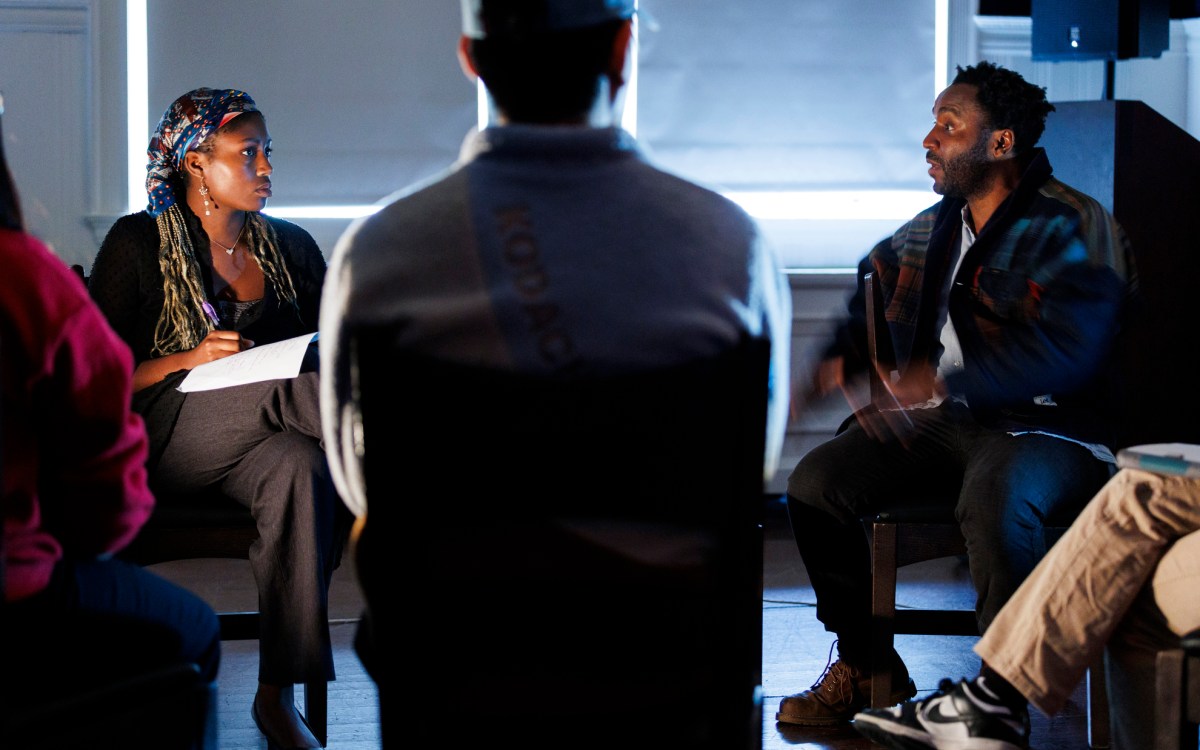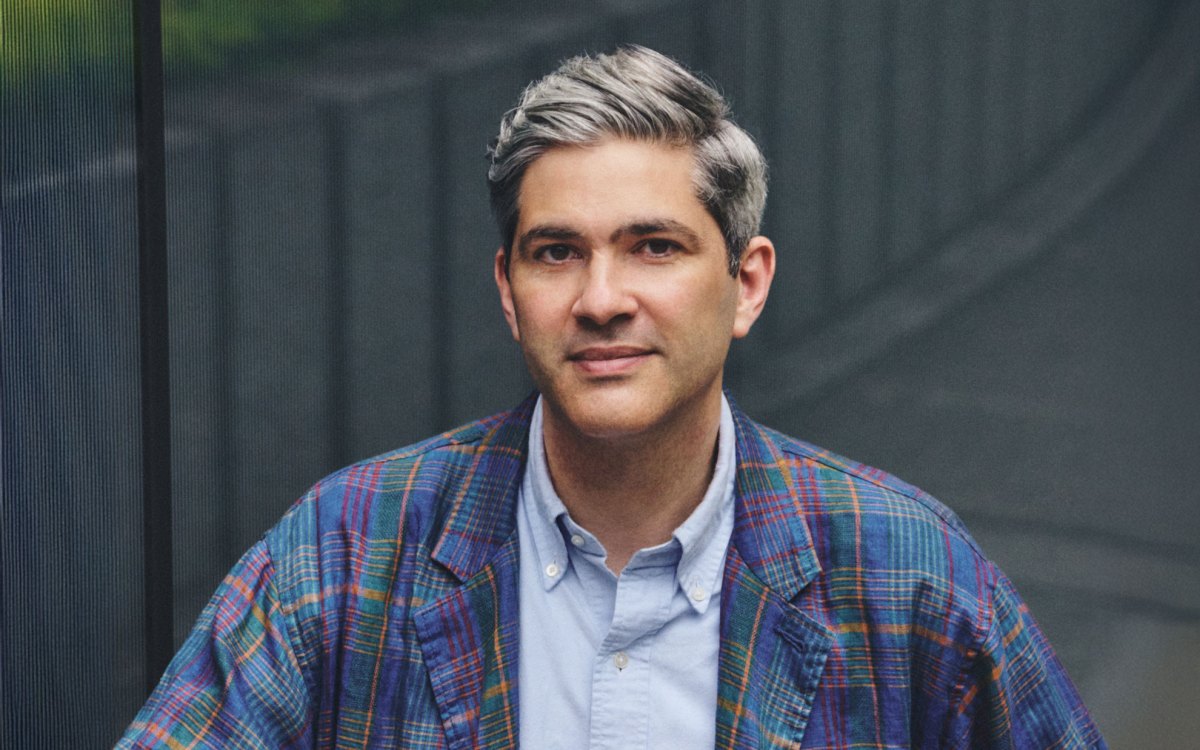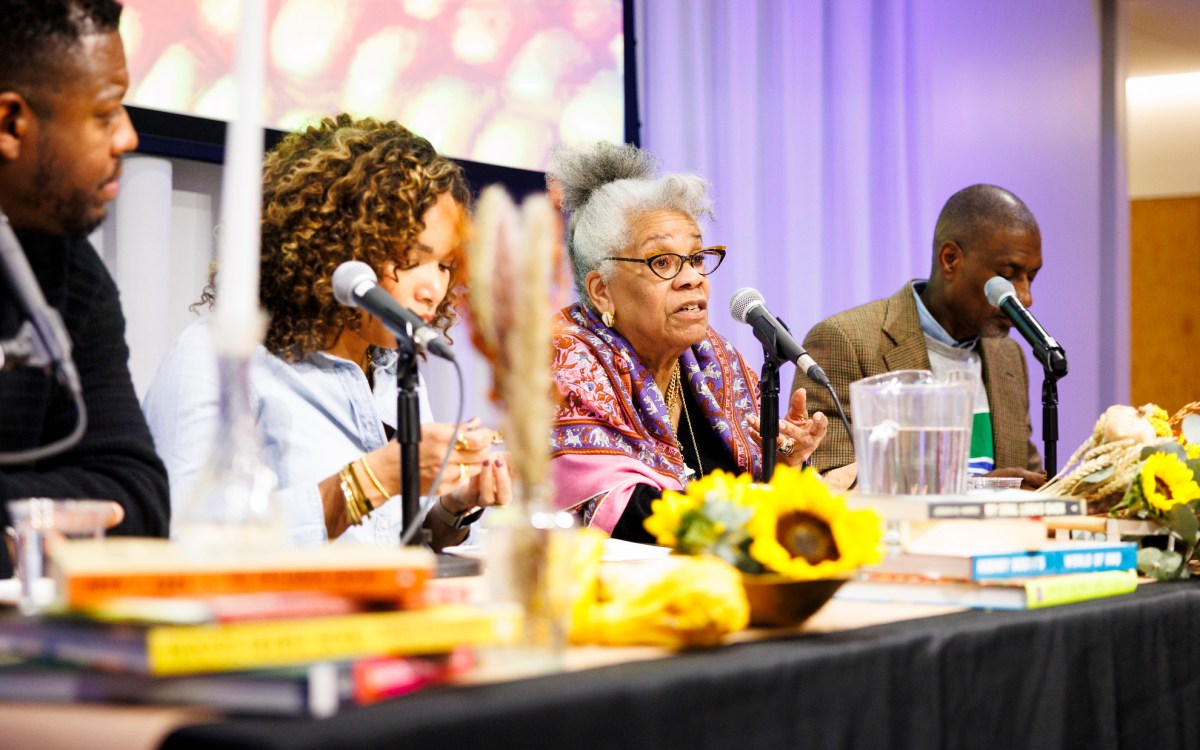Hope has a dark side in alum’s ‘A Guardian and a Thief’
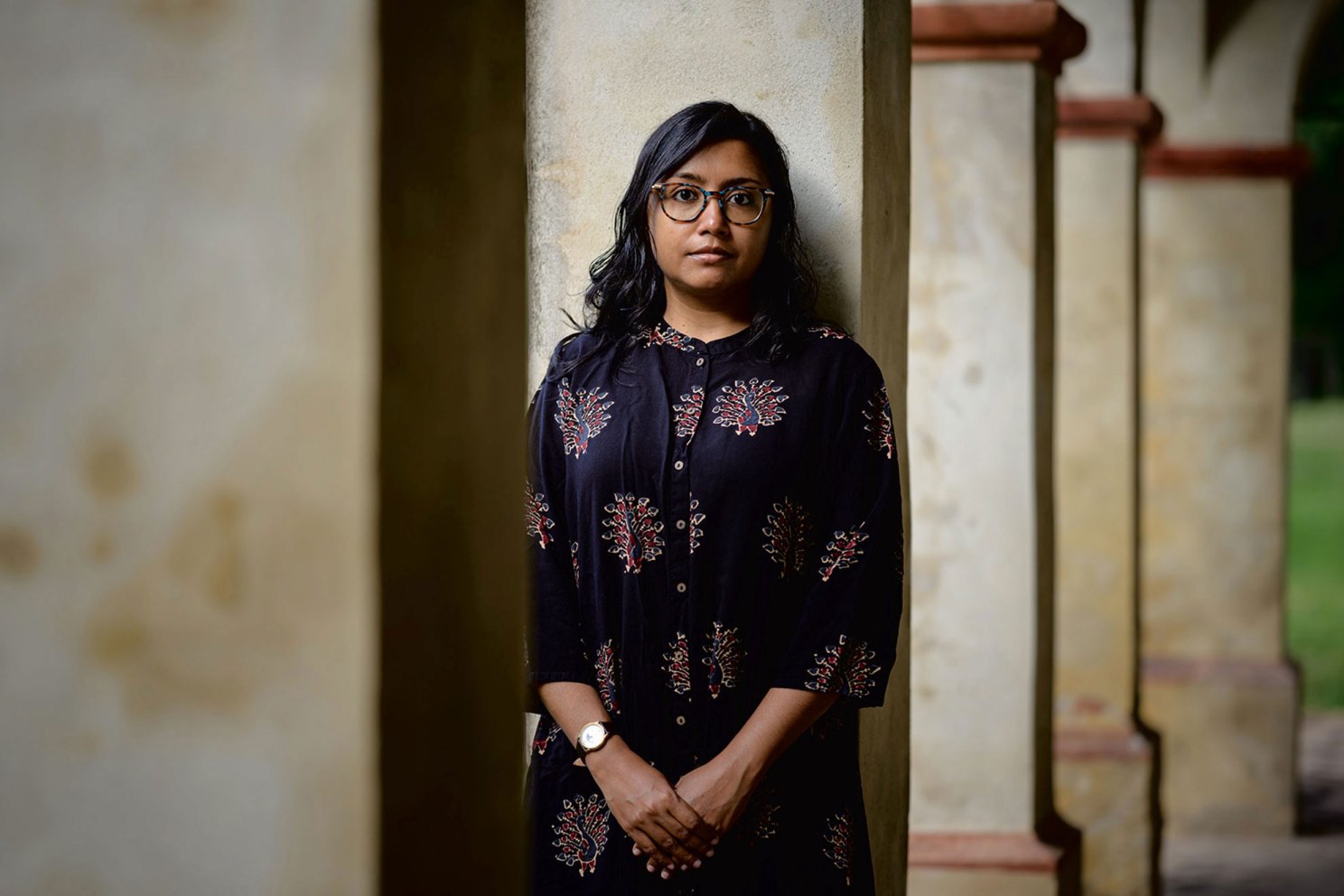
Megha Majumdar.
Photo by Marco Giugliarelli
Megha Majumdar pushes characters to extremes in follow-up to ‘A Burning’
Set in climate-stricken Kolkata in the not-too-distant future, Megha Majumdar’s second novel, “A Guardian and a Thief,” weaves together the stories of two families over the course of a week, each in their own way navigating psychological and moral complexities. “There are two selves who occupy this body,” one of Majumdar’s characters tells us. “There is who I am to strangers, and there is who I am to the people who saw me grow up.”
In this edited interview, Majumdar ’10, who published her debut, “A Burning,” in 2020, discusses how the follow-up — a finalist for this year’s National Book Award in fiction — foregrounds the human heart in conflict with itself.
What inspired “A Guardian and a Thief”?
The book has multiple roots. One thing I was thinking about was love and hope. In a time of crisis, these sentiments we think of as noble and good might gain manifestations which are vicious or mean or sly. Can we still be proud of them in those expressions?
Another place where this book started for me was my hometown, Kolkata, India. It is one of the places most profoundly affected by climate change, and I was thinking about the lived experience of it. When I was reading about increasing heat in Kolkata, I thought back to a childhood experience. I was going to the movie theater to watch “Monsters, Inc.” when it came out. The day was so hot, I remember my shoes sticking to the tar of the road. We can talk about increasing temperatures and heat, but that is what it feels like: Your shoes stick to the road.
So these things were interesting to me — this future world of Kolkata and the moral questions — but I couldn’t make the plot work. I had different characters, a different storyline. Then, in 2021, I had my older son, and my perspective on the book completely changed. I became interested in the point of view of a mother in this crisis. That experience of early parenthood helped me drill down to the emotional core of the book.
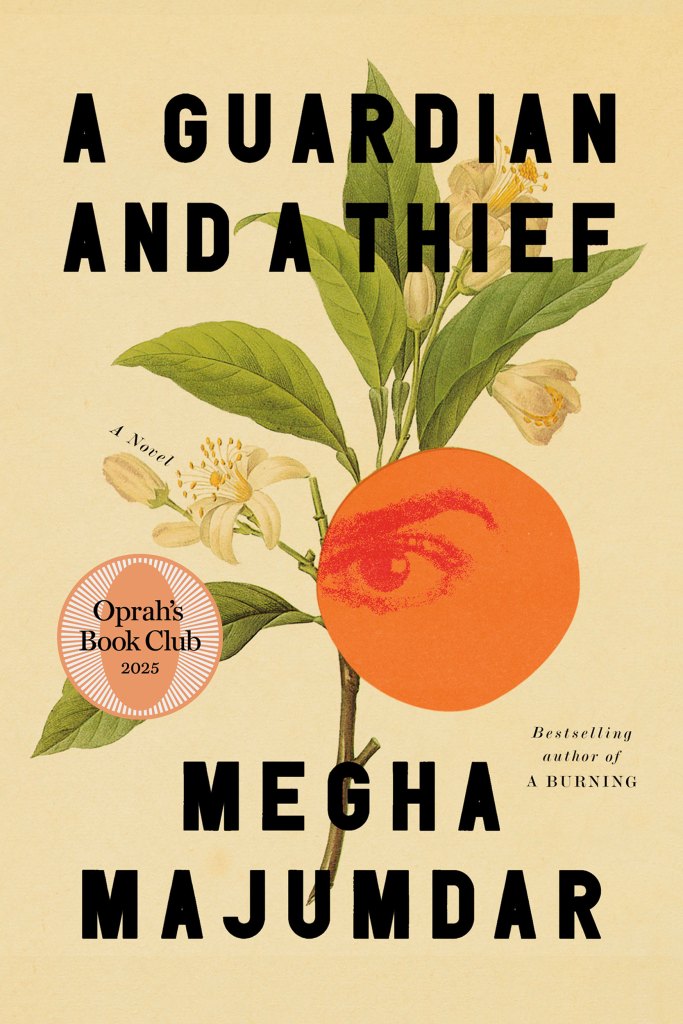
The book takes place over the course of a (very eventful) week. How did you use your writing to capture the intensity and the speed at which the story unfolds?
I knew that I wanted something that would feel filled with tension, really taut. And I would need to sustain that energy, that feeling of something having gone very wrong: What is going to happen? What choices will these characters make? I needed a very compressed amount of time where I could sustain that energy and also show things meaningfully changing. A week felt like a good amount of time for that.
Throughout the story, many of the adult characters are lying, not just to one another but also to themselves. Their internal narratives are often at odds with their actions. What is it about a crisis that brings this out in the characters?
That’s a really interesting question. I think that space exists between who we want to be — the principled self that we want to be, that as a matter of self-preservation we must believe we are — and who we turn out to be when we are under pressure. When we feel that resources are scarce, and we must grab what’s available for our loved ones or other people will grab it instead … that space is interesting to me as a novelist. It’s a space of both claiming something and sacrificing something else, a space of gain and of loss. It’s a space where our conception of ourselves is profoundly altered, and do we have the courage to be clear-eyed about who we really are, or must we lie to ourselves in order to protect the image that we have? And, who’s to say which is the true self? Am I my true self now in a time of relative abundance and comfort, or would I be my true self in a condition of crisis and scarcity?
For a reader, it’s easy to try to pit the “guardian” versus the “thief,” but in many ways they are one and the same. There’s a quote from the book about hope: “Hope wasn’t soft or tender. It was mean. It snarled, it fought, it deceived.” How does this book wrestle with a different portrayal of hope than the one we often encounter?
The book is interested in confronting faces of hope and love that might frighten us. Hope and love are far more complex than we might intuitively comprehend. I think the power of those feelings — the force contained in hope and love — is such that we might be driven to do things that we are not proud of; we might be driven to make choices that completely contradict our sense of ourselves as moral beings, as decent neighbors and friends and members of a community. One of the most energizing things in fiction is to encounter complexity and truthfulness in other people’s lives. And I was very struck when I was reading about climate change by how there was so much talk of hope — how we must be hopeful in the face of really grim predictions — and the assumption is that hope is this thing of light. Well, what if it’s not? You can act out of hope and do something that is really harmful to your neighbor. What do you do with that kind of hope?
What do you hope readers will take away from reading the novel?
I took a creative fiction writing class at Harvard with Amy Hempel, and I remember reading an interview with her where she said that she always writes as if the reader is dying to get away from her. And that has always stuck with me. This might sound strange, but I love thinking about how to entertain a reader. So I hope, first of all, that a reader feels engaged in the book and drawn in by the plot. And then at the end of the book, I hope that they sit with the questions that were so important to me in writing it.
